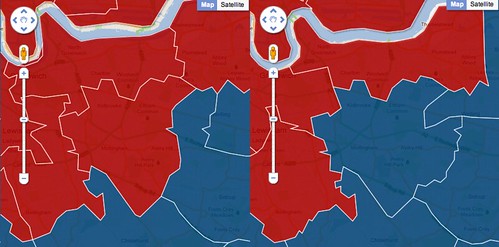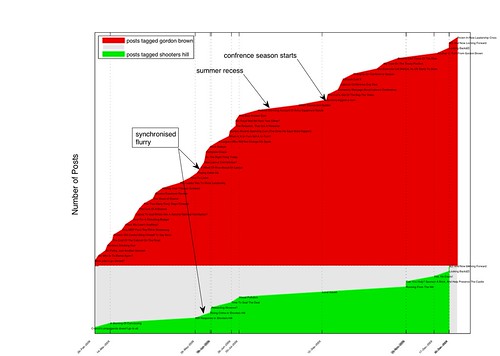
Shooters Hill ward will move out of the Eltham parliamentary constituency into a new Thamesmead and Plumstead constituency if the latest Boundary Commission for England proposals are implemented. The map above shows which wards would be in the new constituency, and there is also an excellent visualisation of the changes on the Guardian web site – snippets of the old and new constituencies are included at the end of this post.
The Boundary Commission proposal aims to reduce the number of constituencies – hence the number of MPs – and balance the number of voters per consituency. New constituencies will have populations of no fewer than 72,810 and no larger than 80,473 people, apart from Isle of Wight. The Boundary Commission also took into account:
• special geographical considerations, including in particular the size, shape and accessibility of a constituency;
• local government boundaries as they existed on 6 May 2010 (see paragraph 16 above);
• boundaries of existing constituencies; and
• any local ties that would be broken by changes in constituencies.
The new boundaries are different to those originally proposed, and the Boundary Commission have documented the reasons for any changes. In the Commission’s original proposals the Eltham constituency, including Shooters Hill ward, was to have been extended into Bexley, but this crossing of borough boundaries “provoked considerable opposition from local residents on both sides of the boundary” – i.e both Greenwich and Bexley. In addition:
The Labour Party expressed strong objections, and Clive Efford MP highlighted the strength of the existing constituency boundary (reflecting not only borough boundaries but also the former division between London and Kent), the limited number of cross?borough access routes, and the division of residential areas on either side of the boundary.
The rationale behind the new Thamesmead and Plumstead constituency is based on strong local ties between different wards, even though this new constituency is split between Greenwich and Bexley. In particular the strong link between the Thamesmead and Thamesmead Moorings wards was seen to be important. The ties between the different Plumstead wards was also a factor:
Some respondents highlighted the ties between Glyndon ward and Thamesmead. Many local residents urged us to recognise the links between Plumstead and Glyndon wards, and, to a lesser extent, Shooters Hill ward. The Royal Borough of Greenwich, among others, suggested that these three wards make up the area commonly regarded as Plumstead, and their shared interests would be best served by their being together in one constituency.
What would this mean politically? The ward-by-ward breakdown of votes in the election for London Mayor shows that the wards in the new Thamesmead and Plumstead constituency voted 56.5% for Ken with Boris on 29.7%, then Lawrence James Webb the Fresh Choice for London candidate just beating Green Jenny Jones into third place by 2 votes and Brian Paddick in sixth behind the BNP.
If you want to comment on the new proposal you have until the 10th December, and you can do it via the Boundary Commission’s web site.
Of course this is all academic given that Nick Clegg has said that the Lib Dems won’t support the boundary changes, unless he changes his mind ….















